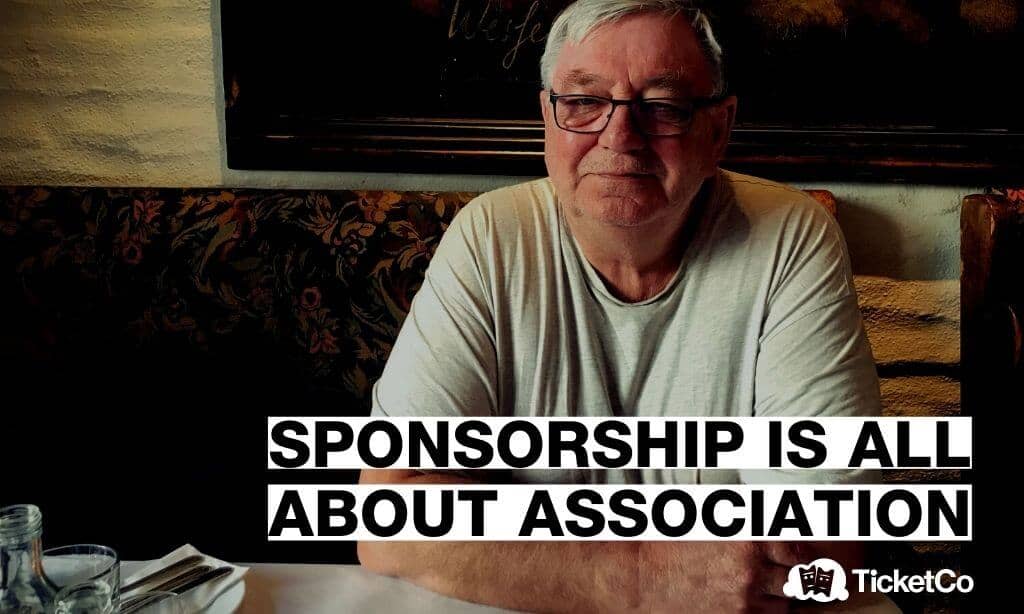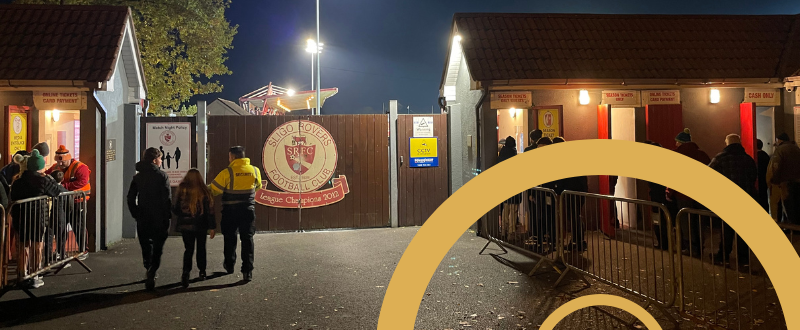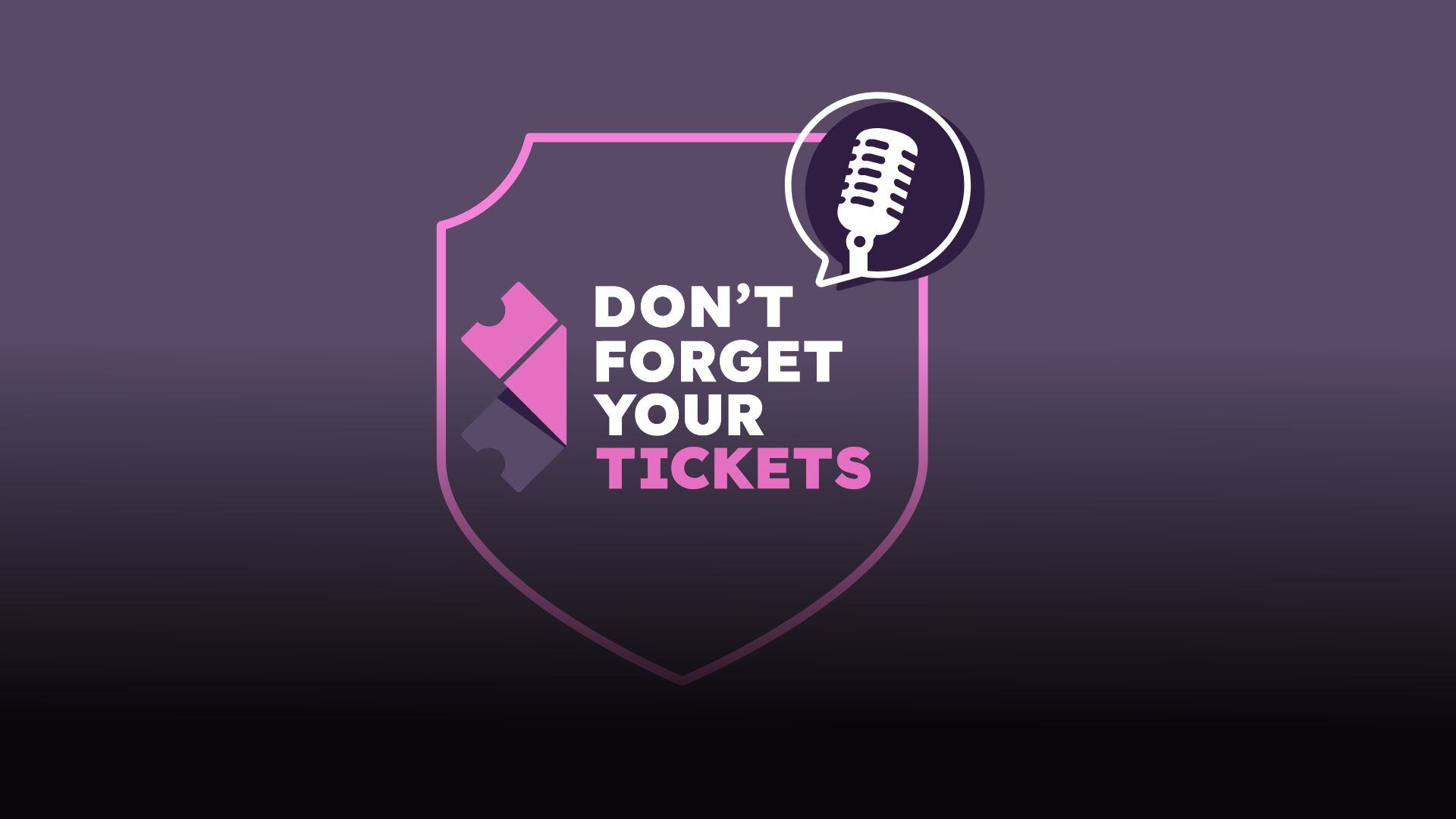Expert reveals how sponsors think

Regardless of whether it’s sports or culture; the sponsorship market is a concern for most organisers. But how do the sponsors think? And what can you as an organiser do to succeed in the sponsorship market? We have asked one of the foremost experts on this subject – the Norwegian King of Sponsorships, Jacob Lund.
Globally there is not many – if any – who singlehanded have signed off a larger sponsor budget than the King of Sponsorships, Mr Lund. As head of sponsorships within Norway’s largest bank DNB for 20 years from 1992 to 2012 he grew to be a brand of his own, with a massive TV presence. During his career more than 165 million GBPs passed his desk and sizzled down on the sports clubs, athletes and cultural institutions he chose to engage with.
He was there when victories were won at the Olympics, at world championships and at world cups, and he was often the first person the triumphant athletes would hug after passing the finishing line. He was everywhere, and he had an extremely good nose for where and when to invest – and how to get the most out of his investments.
Like the Swedish national hockey team. Who would have thought that such a national treasure – (hockey is HUGE in Sweden) – would suddenly be hijacked by a Norwegian competitor to the major Swedish banks? Frankly nobody, except maybe from Jacob Lund himself. Before Sweden’s triumphant 2006 Winter Olympics in Toronto he simply crossed the border to Sweden with a pen, a paper and a bold suggestion. The result was probably the most remarkable Scandinavian sponsorship of all time.
A few months later the Swedish national team Tre Kronor wiped all opponents aside in Toronto and returned home as Olympic champions with a Norwegian bank as their main sponsor.
That was then, though. This is now. Does a retired Norwegian King of Sponsorships have anything relevant to share with UK organisers within sports or arts and culture of today? Why not ask the man himself?
Sponsorship is all about association
“Sponsorship is essentially about association. Which sponsors can you as an organiser associate yourself with? And which sports clubs or arts and culture institution will the sponsors associate themselves with? Whether we’re talking about a small local sponsor or a big national one, there needs to be a match here,” said Mr Lund.
He referred to one of the pivotal moves he did as head of sponsorships at DNB as an example.
“We were engaged in a lot of different sports. We inherited biathlon when we acquired a life insurance company, and the national Norwegian football team entered our portfolio through the acquisition of one of our competitors. In addition, we were involved in athletics and cross-country skiing, and all these sponsorships were actively used both internally and for customer care, as well as for marketing. Even so, we reached a point where we had to acknowledge that our brand’s position among the younger ones was too weak.”
A bold deal
The solution to this challenge was a sponsorship agreement with the snowboard federation, an alliance that was not a given at all.
“At that time, the snowboard federation were more or less bankrupt, and they had a frayed reputation across what we might call the adult part of the population. We saw that this reputation was built on wrong assumptions, and we decided to take the chance that a collaboration with DNB would correct this picture and at the same time give DNB street credibility among the youth,” said Mr Lund.
It exceeded all expectation.
“Snowboarding had such a strong and somewhat rebellious position amongst the youth that an agreement with the country’s largest and most corporate bank didn’t ruin anything. It just gave their overall impression an extra flair. And for the bank, we were acknowledged for being so reputationally confident that we dared to bring a young agitator into our midst. It was a win-win situation, and it ended up as a superb match.”
High heels or hiking shoes
“As a potential sponsoring object, you must choose who you want to be and select sponsors who match this profile. Is your personality that of fake eyelashes and high heels, or is a knitted sweater and hiking shoes more you? You simply have to define your profile,” Mr Lund advised.
Here, your characteristic is an important factor.
“A local sports team should use its efforts within its own neighbourhood. There may be many eager local sponsors to find locally who will recognise the value they will achieve as a local supporter. For a small local organisation to approach major national sponsors is as wasteful as it will be for small sponsors to turn to some of the biggest organisations. Geography, size, demographics – everything needs to match.”
Three basic levels
As a rough, general classification, Mr Lund divides the sponsorship market into three different sizes.
“At the bottom of the pyramid we have the local sponsors and the local sponsor objects. Here we’ll find the youth and amateur sports club and cultural players with a local appeal. Relevant sponsors within this segment may be local grocery stores, petrol stations, restaurants and the like. There are countless examples of highly successful sponsorships at this level.”
“At the level above you will find the regional and the minor national players. On the sponsorship side, you can place most of the banks and other major regional key companies here. When it comes to the sponsorship objects, this is where you for instance will find the professional football clubs below the Premiership level. That is maybe one of the biggest differences within English football; the one between the Premiership and the Championship sides when it comes to their sponsorship profiles. You see it all the way through, from the size of their main sponsors to which brands that are profiled at the stadium. A Premiership club is more or less unreachable for a local sponsor, even if the two have made it to the Premiership from the lower leagues together. It’s sad but true.”
Then it’s the top level. The big league, where there’s only room for the big players.
“Now we’re at the top of the podium, and this is where muscles counts more than everything else. Look for instance at the different national teams and who is sponsoring them. Look at the Premier League sides. The greatest individual profiles within sports or entertainment. Institutions such as the England football team, Wimbledon Tennis Championships and Royal Ascot. This is the level where you really can build or maintain your brand if you’ve got the muscles to do so, and this is where you really can benefit financially as a sponsor object. It is all about awareness and a prominent position in the public space.”
Varied motifs
Mr Lund also points out that the sponsors’ motives may vary quite a lot and that there is no fixed recipe for a successful sponsorship arrangement.
“Brand awareness can be an important goal for most, but it is far from the only thing that matters to the sponsors. Another motivation may be to position one’s position within a specific market, while a third motivation might be to block out competitors. These are mechanisms we see clearly in sports where organisers can offer exclusive hospitality. A common agreement with this sort of organisers will secure market segment or industry exclusivity, and a guarantee against that hospitality places can be sold to competitors. For example, if a bank brings along a potentially large new customer to a match, they certainly don’t want to risk encountering the customer’s existing bank connection in the hospitality space next door.”
In addition, he points to the reputational aspects of sponsoring.
“Through so-called socio sponsorship, a business can take on an active social position. This is a sort of sponsorship that can really make a difference.”
Two great experiences
One of the greatest experiences Mr Lund remembers from his time at DNB was of this kind.
“We sponsored the Norwegian National Theatre, and when they did a rock ’n roll musical production named ‘Worthless Men’ based upon the songs of our late national treasure Joachim Nielsen, we chose to buy an entire performance which we then gave away for free to the more unfortunate between us. Those we might call the clientele of the City Mission. It was an amazing experience. I had the pleasure of giving a short welcome speech, and to stand in front of such an audience in that setting was touching. As marketing activities, that kind of initiative has zero value. But sponsorship is thankfully much more than just marketing That night did not contribute to the bottom line at DNB, but it was even more important for our soul.”
He also recalls a similar stunt around the children’s show ‘Pinocchio’ at the National Theatre in 2009 with equal pleasure.
“For that production we approached the Red Cross and asked them if they would help us provide a cultural offer to children and youngsters who never get the pleasure of visiting the theatre. It was a huge success. We filled two full houses, and we had as many as 80 buses at work to get our audience back and forth. At the stalls of the theatre there was a tremendous commitment. You never forget emotional experiences like that.”
Why he chose biathlon
It is not only the theatre that has brought joy to Mr Lund during his long career as a sponsorship manager. He has also lots of fond memories from numerous sports events, both in terms of the athletes’ achievements themselves and in terms of the sponsorship arrangements.
“My way into this business started with Vital, which was a life insurance company that later was acquired by DNB. That case is a good example of how a sponsorship can lift a brand and sell a product.”
“Life insurance is not a product that people actively seek out the same way we shop for food in the grocery store. Even the value proposition is difficult and somewhat unpleasant, as it is all about death or disability. This means that life insurance has to be actively sold, and for such products brand awareness is crucial.”
For Vital, biathlon became the tool he used to build the brand.
“Biathlon is an immensely TV-friendly sport, and it is superb when it comes to pure logo exposure. When entering this sport, we didn’t limit our engagement to the national biathlon federation. We also entered into an agreement with the International Biathlon Union, and the sum of these engagements came out as a huge success.”
For biathlon athletes to compete internationally they must have a liability insurance, and here Vital saw an opportunity. They tailored such a solution for the IBU (International Biathlon Union), with numbered and highly visible license stickers that all athletes had to wear on their weapons to be able to participate. These stickers were placed just where the TV cameras zoom in when the athletes shoot, and of course they had a large Vital logo as the most eye-catching element.
“Not a single shot was fired internationally for many years without the Vital logo being heavily exposed on the TV screens across Europe. That one was simply a small stroke of genius.”
Indoor environment
But if you think that logo exposure is the alpha omega when it comes to sponsorships, you’re wrong. According to Mr Lund, other factors can be just as important.
“To stick with Vital, the origin of this company can act as a good example. Before we were acquired by DNB, Vital was the result of a merger between two insurance companies with vastly different business cultures. One of the merged companies had what I would call a typical management culture, whilst the other one had a distinct sales culture. Fusing two such cultures in a merged company is a very demanding exercise, and for this kind of situation sponsorships can be a very good tool. Call it some sort of indoor climate measure if you may. Or employee care. With sponsorships, employees can build a common culture through shared experiences, and it is also possible to bring in people from the cultural institution or sports club you sponsor who can contribute with courses or lectures. The opportunity map within sponsoring is huge.”
The new normality
And with that said, let us now leave Mr Lund’s many first hand experiences for a while, and visit the sports and arts and culture world of today. Has anything changed since he left the industry full-time to become a consultant?
“The biggest shift is of course the media revolution, and when addressing that, the first thing we need to acknowledge is that we haven’t just seen ONE revolution, we’ve actually seen two.
“The first one was of course when the TV signals went digital and linear TV lost its monopoly. That opened for a wide variety of more targeted content, and at the same time it reduced the massive impact TV exposure had in the good old days. For the biggest sports events and football clubs this effect has more or less passed unnoticed though, as they still attract a massive TV audience. The effect is more the other way around; this revolution has made TV coverage of minor sports sustainable, and by that it has to some extent democratised the sports.”
Then we have the more recent revolution of live streaming, where Mr Lund sees the really big but yet not unveiled change.
“Pay-per-view live streaming is of course not a new thing. We’ve seen this for years within sports such as boxing and martial arts, but during the pandemic this pivoted from being an activity for the big players to an activity available for everyone. That is a true revolution. Solutions such as TicketCo Media Services has made pay-per-view live streaming and even paywall video-on-demand available for even the smallest of organisers, and it has opened a global market for pioneer organisers who soon will be followed by the early majority. That is how the adoption life cycle works. First you have the innovators. Then the early adopters, which is where we are today. Soon we will see the early majority entering this arena, followed by the late majority when every doubt is wiped away and the business model is thoroughly proven as financially viable. My prediction is that this revolution will be more pervasive than the last one, and we’ve only seen the very start of it yet.”
What will this revolution then mean for the sponsor market?
“If I had the answer to that question, I guess I soon would be a rich man. The truth is I don’t know, and that nobody else does either. But I can of course make qualified assumptions, and my best guestimate is that it will completely change the sponsor objects’ possibilities and the different sponsors’ demands at the bottom of the pyramid. When something suddenly becomes possible, it will soon become a demand. If I had a position within a minor sports club or at a local theatre today, I would definitely grasp this opportunity with both hands. If you’re not in front of a movement that certainly is on the rise, the best you can hope for is to be in the middle of it. No medals have ever been given there. The sponsor market may be huge and varied, but at the same time it is not unlimited. To succeed you need to stand out one way or another, and right now one really low hanging fruit to achieve that it your digital offering. Manage it well.”
Jacob Lund’s six best advice
So, what should you as an organiser then remember if you are about to engage in a dialogue with possible sponsors? Mr Lund has some final clear advice you should seriously consider.
- Think carefully about what kind of image you have and what values you are associated with.
- Be realistic about what offerings you are able to deliver and which benefits you want in return.
- Approach potential sponsors you like and who might like you.
- Focus on sponsors on your own level.
- Think carefully through what it is that makes you particularly attractive to the sponsor you want to engage with, and then emphasize this in your pitch.
- Sponsorship is primarily about association. Steer clear of the sponsors you can’t associate yourself with. Money isn’t everything.
.jpg)

